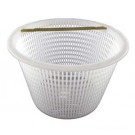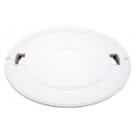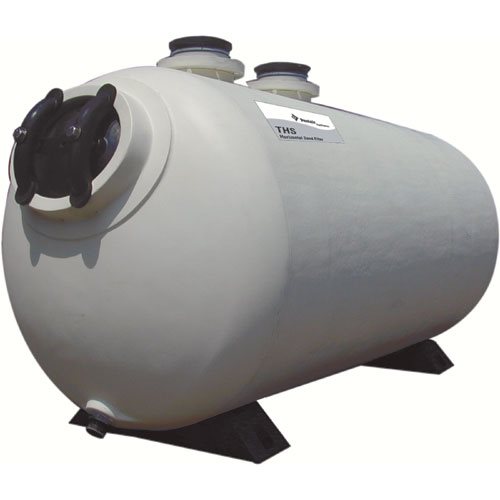https://poolplaza.com/wp-content/cache/breeze-minification/js/breeze_bd060f80bcd4d389cf0354b3206448cb.js
https://poolplaza.com/wp-content/cache/breeze-minification/js/breeze_3e5501ac4f5701f9296d48c304649d9c.js
https://poolplaza.com/wp-content/cache/breeze-minification/js/breeze_c82bd8c00cdac37eb4132c01584868eb.js
https://poolplaza.com/wp-content/cache/breeze-minification/js/breeze_e370ece72253df19ba95c3c53b8f0a7e.js
https://poolplaza.com/wp-content/cache/breeze-minification/js/breeze_9b2e689016bee97027d7287af822287c.js
https://poolplaza.com/wp-content/cache/breeze-minification/js/breeze_80c607cf727ba0f2e6d26420f81d43b6.js
https://poolplaza.com/wp-content/cache/breeze-minification/js/breeze_f0d8ccac48d36218f683e318a594676f.js
https://poolplaza.com/wp-content/cache/breeze-minification/js/breeze_85989886b5245f1c6896dbb79be80a93.js
https://poolplaza.com/wp-content/cache/breeze-minification/js/breeze_4f6ce817155cc2aee9cdb5f446b4f481.js
https://poolplaza.com/wp-content/cache/breeze-minification/js/breeze_6d49a9860612cbebfec8e35a6cb70a1f.js
https://poolplaza.com/wp-content/cache/breeze-minification/js/breeze_c1249a03e5abbe9e89e0f5d0ff21024e.js
https://poolplaza.com/wp-content/cache/breeze-minification/js/breeze_e66f008dac6edfb1a7dc0df26a225444.js
Alkalinity – Testing: Pool School by PoolPlaza Pool Supplies
Home »
Alkalinity – Testing: Pool School by PoolPlaza Pool Supplies Alkalinity – TestingTesting Alkalinity Levels The Total Alkalinity test is a titration type of test. It contains three elements. First, you add a chlorine neutralizer to the sample. This removes the chlorine from the sample that would interfere with your test results. In the Taylor test kit, this is done by adding 2 drops of R-0007. Note that if your chlorine level is above 5 ppm, you should double the number of drops in this step in order to be sure to neutralize the chlorine. Second, you add the alkalinity test solution to the sample. In the Taylor test kit, this is done by adding 5 drops of R-0008. Swirl to mix. Third, you add a mild acidic test reagent to the sample drop by drop, counting the number of drops until the test sample turns colors. This is known as titrating the sample. In the Taylor test kit, you add R-0009 drop by drop until the sample turns from green to red. Then count the number of drops of R-0009 you added and multiply by ten to get the total alkalinity reading. In other words, if it took ten drops, then your reading is 100 ppm.
There is one interference to be aware of in the alkalinity test. If the chlorine level is really high, then the color may flash from blue to yellow instead of green to red. This can be solved by adding more neutralizer in step one.
There is one misconception to be aware of in the alkalinity test. It is widely circulated that you should take your Total Alkalinity reading and subtract one third of the Stabilizer reading to get your true alkalinity reading. THIS IS NOT TRUE. Don’t believe it even if your local pool store kid tells you it is true. He is probably delusional. Stabilizer is Cyanuric Acid and does not register as Carbonate Alkalinity, therefore it will not affect the accuracy of your Total Alkalinity test.
Analyzing your Total Alkalinity Reading 
It is important to keep the Total Alkalinity between 80 and 120 to help provide a buffer of alkaline materials in solution in the water to help buffer the water against pH changes. If the alkalinity is too low, then the pH can swing up and down fairly wildly and damage to the pool or its equipment will occur over time. If the alkalinity is too high, then the water will cloud up very easily. This is because the water is over-saturated. There is only so much material that can go into solution. If the alkalinity is just right, then the water will be able to buffer pH swings so that they do not attack the plaster or cause the pH to swing wildly. Other Clues to High Alkalinity Reading There are some tell-tale signs that may help indicate that you have a high alkalinity reading. 1. If your pool clouds up quite a bit after adding Calcium Hypochlorite shock, you may well have a high alkalinity reading. It would probably be good to test at this point. Something is keeping it from going into solution and this could well be the cause. 2. If you have cloudy water, it is good to test for Total Alkalinity. This is one of the many causes

|
https://poolplaza.com/wp-content/cache/breeze-minification/js/breeze_80412f3abc385a74ddd5a73046f8b797.js
https://poolplaza.com/wp-content/cache/breeze-minification/js/breeze_153a77f4ec79895e4d7da71b00239f6d.js
https://poolplaza.com/wp-content/cache/breeze-minification/js/breeze_fe6752cdb7571e7d2766ec91d69b7734.js
https://poolplaza.com/wp-content/cache/breeze-minification/js/breeze_52d6d367acf34c12acdf530def45934c.js
https://poolplaza.com/wp-content/cache/breeze-minification/js/breeze_e8a80f2ba65478fa169257b8b121f824.js
https://poolplaza.com/wp-content/cache/breeze-minification/js/breeze_facc6c3d5781880ea335f9647e6957a2.js
https://poolplaza.com/wp-content/cache/breeze-minification/js/breeze_f66707ee253595981b3eac3580c28b09.js
https://poolplaza.com/wp-content/cache/breeze-minification/js/breeze_79412c0e6e830460b21fe96f1aaf4530.js
https://poolplaza.com/wp-content/cache/breeze-minification/js/breeze_18837a21344b02b7d98b60e068d34fdb.js
https://poolplaza.com/wp-content/cache/breeze-minification/js/breeze_cef771775d4cf914cea78459a55170c9.js
https://poolplaza.com/wp-content/cache/breeze-minification/js/breeze_3724f008489263a1f4555c20fcd514f7.js
https://poolplaza.com/wp-content/cache/breeze-minification/js/breeze_7d2402bbb0416a8170eaadbf8d2b3358.js
https://poolplaza.com/wp-content/cache/breeze-minification/js/breeze_b07aea9186888da12531bc75d4fa6d55.js
https://poolplaza.com/wp-content/cache/breeze-minification/js/breeze_6a869d0cc4b6b7abf4c680050de7b0d8.js
https://poolplaza.com/wp-content/cache/breeze-minification/js/breeze_327eaf95bce778e2024196e0742f5808.js
https://poolplaza.com/wp-content/cache/breeze-minification/js/breeze_5e2b92f5b4a4d6822a35fe2c6d147c45.js
https://poolplaza.com/wp-content/cache/breeze-minification/js/breeze_ce4723df0d8197886517122a34a8b8db.js
https://poolplaza.com/wp-content/cache/breeze-minification/js/breeze_42754463f790895653cfabd4901eb992.js
https://poolplaza.com/wp-content/cache/breeze-minification/js/breeze_6f79520045de625e9e0b38e7ac52d050.js
https://poolplaza.com/wp-content/cache/breeze-minification/js/breeze_e5fc5af378bb3522b40a396eced3e867.js
https://poolplaza.com/wp-content/cache/breeze-minification/js/breeze_de3cab255dd2fb92ca8eb08cc5a00678.js
https://poolplaza.com/wp-content/cache/breeze-minification/js/breeze_5b7b3741953d07b3afa2c8bfbf2a36e1.js
https://poolplaza.com/wp-content/cache/breeze-minification/js/breeze_82728945c41a21943002b011b6e032b5.js
https://poolplaza.com/wp-content/cache/breeze-minification/js/breeze_237e6ab47d57d13c82a023b8879641d3.js
https://poolplaza.com/wp-content/cache/breeze-minification/js/breeze_7698dcd89f77adc2f4a1fa1a769e0cb5.js
https://poolplaza.com/wp-content/cache/breeze-minification/js/breeze_fd5adaa2c5940375c086931405a70cd6.js
https://poolplaza.com/wp-content/cache/breeze-minification/js/breeze_9d785a6dfc0e1e453637328fb0e2d253.js
https://poolplaza.com/wp-content/cache/breeze-minification/js/breeze_b196a3aa13757b20d27a7ff378c5e9ce.js
https://poolplaza.com/wp-content/cache/breeze-minification/js/breeze_b2b895e44777c9e40879c48c154f6667.js
https://poolplaza.com/wp-content/cache/breeze-minification/js/breeze_58885a166f220cacb5f9d8f0ce4d3cf0.js
https://poolplaza.com/wp-content/cache/breeze-minification/js/breeze_ff72beb24b22db6c0c44b2ed838d78ef.js
https://poolplaza.com/wp-content/cache/breeze-minification/js/breeze_d0ed18ef8f37159bbb5e818907d365fc.js
https://poolplaza.com/wp-content/cache/breeze-minification/js/breeze_fe838885f2c82e42cb0a0cd382b6b0f3.js
https://poolplaza.com/wp-content/cache/breeze-minification/js/breeze_c052ed33cf815872b6b21d0fe2a03774.js
https://poolplaza.com/wp-content/cache/breeze-minification/js/breeze_476c631dcff875882c976bf664144227.js
https://poolplaza.com/wp-content/cache/breeze-minification/js/breeze_e338d18b920eeb76253509d534eb561e.js
https://poolplaza.com/wp-content/cache/breeze-minification/js/breeze_6c2251434632e52f02722735c27d4c96.js
https://poolplaza.com/wp-content/cache/breeze-minification/js/breeze_d61c71df53585f027bc6802885f47c5e.js
https://poolplaza.com/wp-content/cache/breeze-minification/js/breeze_143a8a4cf121677420bf9b272b999ac0.js
https://poolplaza.com/wp-content/cache/breeze-minification/js/breeze_5f0dbdc70a749cc3863351c523e6c5a0.js
https://poolplaza.com/wp-content/cache/breeze-minification/js/breeze_684a69c0110753f941932c9082525526.js
https://poolplaza.com/wp-content/cache/breeze-minification/js/breeze_c47714055c4a7a7322afa706a782b7c2.js
https://poolplaza.com/wp-content/cache/breeze-minification/js/breeze_fbcad617a78d421a45e0d3c5c8f75704.js
https://poolplaza.com/wp-content/cache/breeze-minification/js/breeze_e5c68dc8422ff861a1777c0896100ada.js
https://poolplaza.com/wp-content/cache/breeze-minification/js/breeze_624ddc5fd0506d450d1ef69e28615bf9.js
https://poolplaza.com/wp-content/cache/breeze-minification/js/breeze_acb5ff855fd06f3353a4481f59e77493.js
https://poolplaza.com/wp-content/cache/breeze-minification/js/breeze_89b52f61e33546cd127476a812a9a1a3.js
https://poolplaza.com/wp-content/cache/breeze-minification/js/breeze_69a10654d014efb9feddf313bf51d2ee.js
https://poolplaza.com/wp-content/cache/breeze-minification/js/breeze_d0a7ae5d09fcc08a590860819e2fbc6c.js
https://poolplaza.com/wp-content/cache/breeze-minification/js/breeze_18d46018b2f006e5a08993c933abc30f.js
https://poolplaza.com/wp-content/cache/breeze-minification/js/breeze_9318a5cb7b993c1449ac430ad2e71081.js
https://poolplaza.com/wp-content/cache/breeze-minification/js/breeze_515de1114d09c4531a5000619191a92a.js
https://poolplaza.com/wp-content/cache/breeze-minification/js/breeze_cd69ef609fad62c6e5379860cbe84317.js
https://poolplaza.com/wp-content/cache/breeze-minification/js/breeze_8af4da5309ec14b65494be95f7914d39.js
https://poolplaza.com/wp-content/cache/breeze-minification/js/breeze_a5106d13d536a8a870097fd4ce15695a.js
https://poolplaza.com/wp-content/cache/breeze-minification/js/breeze_5bee61a9a281aa67fcf2e04a56d67031.js
https://poolplaza.com/wp-content/cache/breeze-minification/js/breeze_7106145d8410948f4f3e3b7d71668ee6.js
https://poolplaza.com/wp-content/cache/breeze-minification/js/breeze_9ae00dd1846f1767d2995b2c144fd526.js


































